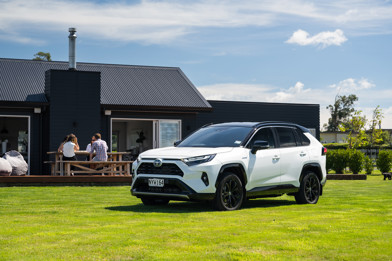Sometimes a car doesn't attract drivers
Layers below the stellar sellers Corolla and Ranger, layers even below the top 10 and the good reliables that fill out the list, there's a whole group of worthy warriors that had lots of good points but failed to make much of an impression on the New Zealand market.
Some sold well overseas but didn't make the grade here; some were victims of circumstance, others a bit too "out there", too expensive or had real or perceived shortcomings that overshadowed their good points.
Here's Driven's list of 10 (in alphabetical order) from the past 20 years. There are plenty of others, so your choices may differ.
Daihatsu Materia

Daihatsu's mini-MPV did reasonable numbers compared to some on this list, but parent Toyota must have been disappointed with New Zealand sales compared to a North American-spec version that achieved mini-cult status. Sporting a wide but stubby look and impressive interior space for its size, the Materia was aimed at widely differing markets -- young people and the elderly. Maybe this is why it didn't gel with either market here, but the elderly rarely have had a small car so easy to get into and out of, and it was a superb carrier for all the stuff young singles and families like to tote around.
Ford Ka

Europe took to the distinctive-looking urban car, but Kiwis didn't. It lasted only four years and convinced Ford not to even try to sell its successor here. This two-door with its polarising appearance was built on a Fiesta platform that endowed it with decent dynamics. Engine performance was fairly ordinary. Ka's black plastic bumpers and wheel arches, meant to resist parking dings, put off some buyers (they were later changed to body colour), as did the lack of an14309 automatic transmission.
Holden Adventra

It seemed such a good idea but the buying public didn't think so. The idea was to graft an electronically controlled, full-time all-wheel-drive system on to a VY Commodore wagon (and later the VZ), giving it considerable added capabilities in difficult road conditions. Holden did the same thing on the Crewman ute. Unfortunately, both were a sales bomb, partly because they were initially only available with a relatively thirsty 5.7-litre V8 that didn't give the heavy wagon any payback in terms of quick performance; and partly because Subaru did it better with the slightly smaller Outback.
Honda Logo

There was nothing wrong with the Logo other than it was a bit boring. Weeks after the exciting Jazz was introduced, everyone had forgotten about it. Logo was a not-entirely-successful attempt to repeat the huge success of the first-generation Civic and borrowed much of its technology from the Gen-4 Civic. It had good interior room for its size and did everything well. Except excite buyers.
Jeep Commander

Like the Adventra, this seemed like a good idea -- to build on the success of the excellent Grand Cherokee with a similar though larger seven-seater, a modern version of the oversized long-distance, touring-friendly Grand Wagoneer that US pensioners loved. Sadly, it was a big, angular clunker that, along with the previous version of the Cherokee, represented a low point in Jeep design. It was competent at what it did but sales here were hugely underwhelming; indeed, it underwhelmed almost every market and was quietly discontinued in 2010.
Mitsubishi Pajero Junior

The compact 4WD could have provided competition for the Suzuki Vitara, the little off-roader that charmed everyone -- but it didn't. It arrived too late and lacked the Suzuki's compelling styling, although otherwise was a decent design and good off-road. It met its end in 1998 when the somewhat similar five-door Pajero iO was launched. That became a moderately good seller here.
Rover 220 Tomcat

When introduced, the 220 Turbo Coupe was the most powerful and fastest production Rover ever built. Called Tomcat during its development, the name stuck. Here was one wild car with blistering performance for its time, but it suffered from appalling torque steer, a combination that made every trip interesting. It could have been a good -- perhaps almost great -- enthusiast's car but too many rivals cost less and had fewer mechanical problems.
Saab 9-3

The 9-3 appeared in 1998 as little more than an upgraded version of the 900 but was redesigned for 2003. A decent car in many respects, the 9-3 was under-marketed and under-represented by dealers here, never reaching its potential. Too bad, as it was a good combination of styling, performance, safety features and performance. Saab was having financial problems; the plug was pulled and despite efforts to save it, that was that.
Suzuki Ignis

The fortunes of the Ignis are similar to Honda's Logo. A worthy, inexpensive car that sold reasonably well, it was dropped when today's Swift was introduced. Ignis was also the basis for the Holden Cruze light SUV that has also been forgotten. Perhaps it really was meant as a trial run for today's Trax?
Toyota Picnic

Like Doctor Who's Tardis, the Picnic seemed to have more room inside than outside. Basically a fat Corolla, the Picnic seemed to offer lots, but the buying public didn't see it that way and sales were never more than modest. On closer examination, the Picnic's use of interior space was possibly more clever than capacious and it had strong competition from roomier, cheaper used imports, including from the Toyota stable.




